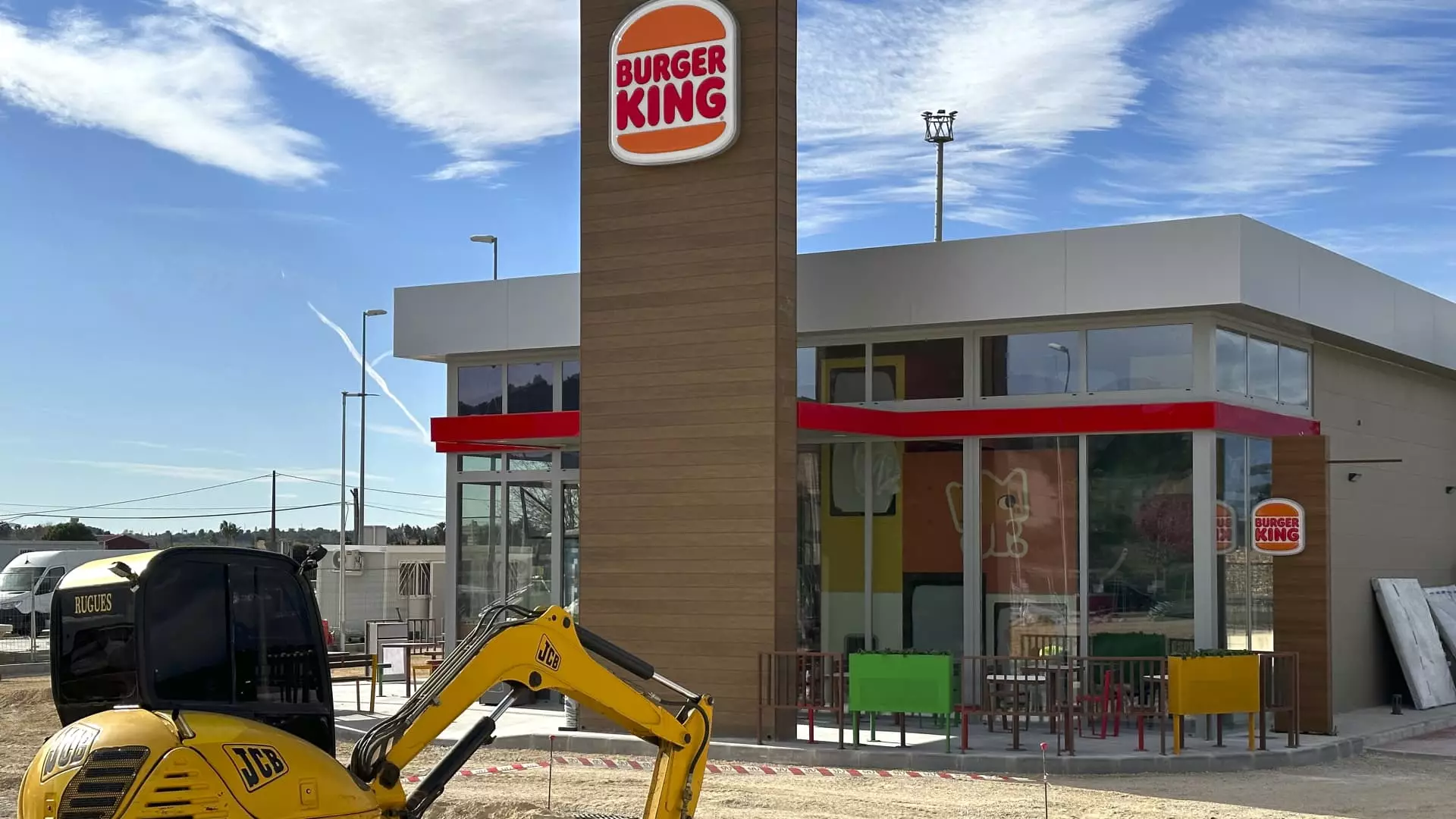In a stark reminder of the challenges facing the fast-food industry, Restaurant Brands International (RBI) recently released its quarterly earnings report, revealing a disappointing performance that fell short of Wall Street’s expectations. The company, which oversees well-known chains such as Burger King, Popeyes, Firehouse Subs, and Tim Hortons, reported adjusted earnings per share of 93 cents, slightly below the anticipated 95 cents. Revenue also lagged behind expectations at $2.29 billion, versus estimates of $2.31 billion. The company’s modest 0.3% global same-store sales growth further exemplified the struggle to maintain momentum amid a fluctuating economic landscape.
A significant point of concern for RBI is the performance of its chains in the domestic market, where same-store sales saw declines across three of its four properties. Burger King reported a drop of 0.7%, Firehouse Subs experienced a contraction of 4.8%, and Popeyes saw a staggering decline of 4%. These results underscore the intensifying competition and fluctuating consumer behaviors that are now dominating the fast-food sector.
CEO Josh Kobza indicated some improvement as October began, with a slight uptick in sales trends across the business. However, this positive change is overshadowed by the stark reality of declining sales in previous months, highlighting the volatility of consumer sentiment and spending. Such trends demonstrate that while there may be signs of recovery, they are fragile and not necessarily indicative of a sustained turnaround.
The Economic and Competitive Landscape
Kobza attributed some recent improvements to external economic factors, such as decreasing gas prices and moderating inflation, which may lead consumers to feel a bit more solvent. However, the reality remains that customer spending behavior is cautious, likely impacting discretionary spending in dining establishments. Furthermore, the ongoing “value wars” among fast-food chains, especially Burger King, position the company in a precarious situation. Such dynamics compel them to focus more on pricing strategies rather than robust marketing initiatives, potentially stunting overall brand evolution.
With consumer spending diminishing across the board, brands like Burger King are finding it challenging to maintain market share against competitors who are equally struggling to attract patrons. The continued competition over pricing could compel further reductions in profit margins across the fast-food sector.
Tactical Adjustments and Strategic Moves
In response to dwindling sales, RBI has been attempting to reinvigorate customer interest through promotional strategies. For instance, Popeyes introduced pricing strategies that emphasized value, such as a three-piece chicken meal for $5. These moves are essential to counteract the decline in foot traffic as consumers opt for more affordable dining options amid rising economic pressures.
However, simply lowering prices may not be enough. The effectiveness of these promotional offerings will depend on whether they can truly drive brand loyalty and repeat visits rather than merely serving as temporary fixes for sales declines. Tackling issues like service speed and overall customer experience will be crucial for maintaining competitive advantage in the long term.
Interestingly, not all brands under the RBI umbrella faced the same difficulties. Tim Hortons stood out with a respectable 2.3% increase in same-store sales, although it did not meet Wall Street’s expectations of a 4.1% increase. Tim Hortons’ ability to grow traffic and enhance its service speed reflects a targeted strategy that, if emulated by other brands, could bear fruit in more sustained sales growth across the company.
Internationally, RBI also reported slight growth, with same-store sales up 1.8%, yet this again fell short of the expected figures. This underlines the challenge of achieving consistent performance not only domestically but also in global markets where competition and consumer preferences can differ widely.
Restaurant Brands International’s third-quarter results serve as a crucial reminder of the need for strategic reassessment in an ever-evolving economic landscape. The company has revised its forecast for full-year system-wide sales growth downward from an initial range of 5.5%-6% to a more modest outlook of 5%-5.5%. This adjustment implies a recognition of the difficulties ahead and a necessary pivot towards more sustainable and resilient business practices.
As RBI navigates this challenging environment, its ability to adapt its strategies in response to consumer behaviors and economic pressures will be critical. Without a doubt, the fast-food titan confronts a precarious path ahead, one that requires innovation, value-driven marketing, and a customer-first approach to reclaim its footing in a competitive industry.


Leave a Reply